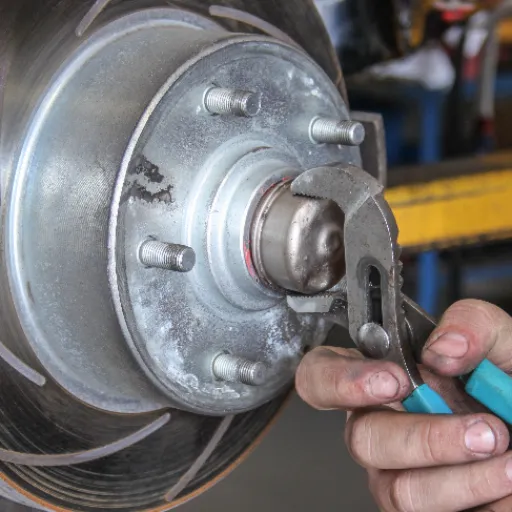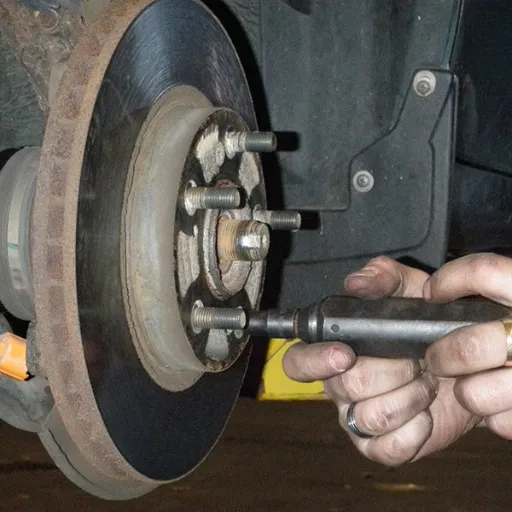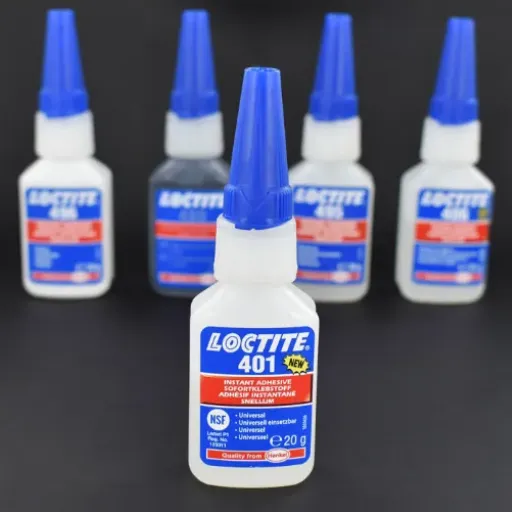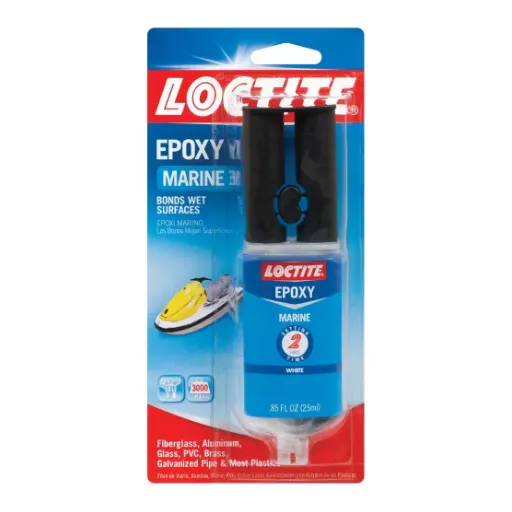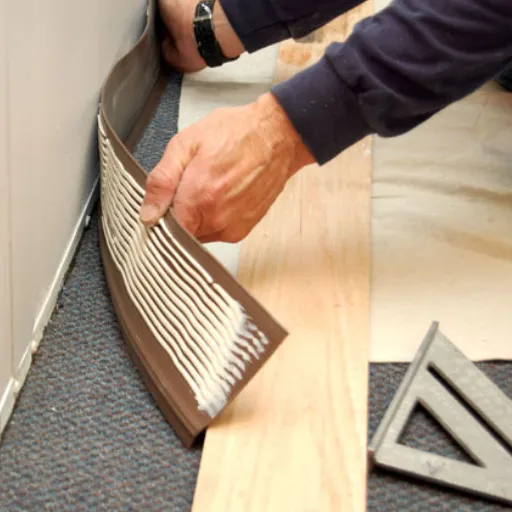When it comes to car maintenance, wheel bearings are rarely discussed until a problem arises. Although these small elements are hardly ever taken seriously, their absence renders driving impossible, as they minimise frictional losses. Yet if a wheel bearing reaches its service limit, a terrible squeaking noise will be heard and bald spots on the tires will be seen; in the worst-case, not-uncommon scenarios, illegal driving will occur. If you want to know about wheel bearings’ replacement cost or their possible symptoms, you need not look far. This article explains how wheel bearing replacement costs are determined, how to recognize symptoms that may indicate issues beyond wheel bearings, and how to maintain the vehicle properly.
Introduction to Wheel Bearings and Their Importance

One of the most essential parts of a car’s control is the wheel’s ease of movement. This can only be achieved with the help of something called wheel bearings. These crucial components are located in the wheel hub to hold the vehicle in place as the wheels rotate. A wheel bearing can reduce friction, resulting in a smoother, more enjoyable ride. The safety and performance of the car depend on the efficiency of the bearings; if they deteriorate, it can lead to many negative consequences, such as poor vehicle control and braking. To ensure passenger safety and the smooth operation of the car, regularly and promptly replacing these parts will help prevent any danger.
What are Wheel Bearings?
Wheel bearings are precisely machined components that allow a vehicle’s wheels to rotate freely with minimal friction. Conventional wheel bearings, which generally consist of hardened steel balls or rollers inside a race or housing, are used in wheel hub assemblies to support the vehicle’s weight and allow the wheels to rotate freely.
The latest designs in wheel bearings are sealed, pre-lubricated, and pre-protected against dirt, water, and other contaminants, for enhanced durability and reduced maintenance requirements. In due course, the wheel bearings, subjected to high mileage, bad roads, improper installation, or a bit of bad luck, will wear out. A failing wheel bearing usually translates to strange sounds like grinding or humming, uneven tire wear, and a loose steering feel.
⚠️ Important: Getting a wheel bearing replaced promptly is crucial for preserving vehicle safety and keeping more serious problems from developing. You may want to refer to your vehicle’s manual and seek professional assistance whenever in doubt about anything related to the wheel bearings.
Why Wheel Bearings are Crucial for Vehicle Safety
Wheel bearings play a vital role in safety and performance. They support the vehicle’s weight, let the wheels rotate smoothly, and prevent friction during motion. A wheel bearing, under perfect working conditions, would provide a stable, all-around handle, steering, and tire wear. At its worst, a wheel bearing failure impairs the above functions; it can make the vehicle difficult to steer and very noisy, and, in extreme cases, the wheel may be detached from the suspension. Yes, regular checks and timely replacement of wheel bearings are key to preventing accidents and prolonging the vehicle’s life. Always follow the manufacturer’s recommendations and use quality parts for all wheel-bearing work.
Common Types of Wheel Bearings
The common types of wheel bearings include ball bearings, roller bearings, tapered roller bearings, and precision ball bearings.
| Type | Key Use | Durability | Maintenance | Noise Level |
|---|---|---|---|---|
| Ball Bearings | Versatile | High | Low | Low |
| Roller Bearings | Heavy Loads | High | Moderate | Moderate |
| Tapered Roller | Axial Loads | Very High | Moderate | Moderate |
| Precision Ball | High Speed | High | Low | Low |
Factors Influencing Wheel Bearing Replacement Costs

🔍 Key Factors to Consider
- Type of Vehicle: A vehicle’s make and model heavily influence replacement costs, as parts for some cars tend to be more expensive or are difficult to source.
- Type of Bearing: Wheel bearings, which can be precision ball bearings or tapered roller bearings, will differ in price, depending on their design and use.
- Labor Costs: Depending on the replacement procedure, a different amount of time and effort may be required. If the vehicle is complex, replacing it could be costly.
- Replacement Parts Quality: The selection of aftermarket or OEM (Original Equipment Manufacturer) parts will have price implications: OEM parts will generally be more expensive but might also be more reliable.
- Condition of Adjacent Components: If other components surrounding the wheel bearing, such as hubs or axles, are also worn or damaged, the overall cost may increase due to additional repairs or replacements.
Price of Wheel Bearing Parts
Prices can vary widely depending on the type, make, and model of the vehicle. In general, wheel bearings are $50 to $200 apiece. Bear in mind that high-end or specialized vehicle bearings can cost $300 or more. There may be price disparities based on brand and OEM status. Always shop for prices and check your compatibility before making a purchase.
Labor Expenses for Replacement
Labor costs for wheel bearing replacements can range from $150 to $400 per wheel, depending on where you are and the complexity of the job. Since front wheel bearing replacement is easy, it’s less expensive compared to rear wheel bearing. The latter may involve processes like handling the hub assemblies. Labor is usually charged between $75 and $200 per hour. Having a very detailed estimate from trusted professionals is advisable before going into the repair.
Impact of Vehicle Type on Replacement Costs
However, the cost of wheel bearing replacement is also affected by the type of vehicle you drive. Typically, SUVs, trucks, or high-end models cost more because their systems are relatively complex or their parts are specialized. For example, wheel bearing replacement on a heavy five-ton truck may require additional labor and sturdier components, resulting in higher parts and labor costs. On the other hand, servicing smaller, more common vehicles such as sedans or compacts will generally be cheaper, since parts are readily available and typically do not require intensive labor.
Searches for “wheel bearing replacement costs” indicate that an unusual eye for higher repair bills could mean that new electric vehicles and hybrid cars are the ones. This is due to their advanced engineering and the specialized skills required by mechanics to work on these vehicles. Ultimately, understanding how your vehicle type affects reselling costs helps you budget more effectively and choose the right professional for the job.
Average Cost to Replace Wheel Bearings
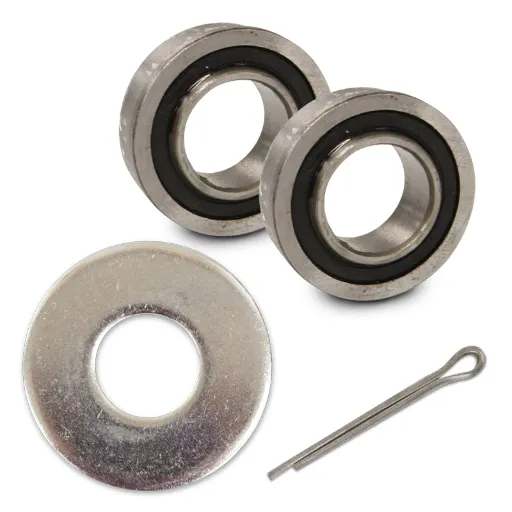
Customarily, wheel bearings cost $150 to $500 per wheel; costs vary with the vehicle make and model, prevailing local labor rates, and whether only parts or parts and labor are included. The more complex the environment for front wheel bearings, or if it is for a high-line or luxury car with proprietary parts, the more it will cost.
Typical Price Ranges for Wheel Bearing Replacement
💰 Economy Cars
$150–$300
per wheel
🚗 Mid-Range Vehicles
$200–$400
per wheel
✨ Luxury/High-Performance
$400–$500+
per wheel
📝 Note: These are estimated prices, inclusive of parts and wages, and are subject to change based on your location and vehicle-specific requirements. Always consult an experienced mechanic for an exact estimate.
Regional Variations in Replacement Costs
The varying location factor affects the cost of wheel bearing replacement. For example, in cities with many auto shops, prices may be competitive enough to lower costs compared to operations in isolated towns or locations with fewer choices. Middling cities in the Midwest have lower labor rates, resulting in lower replacement costs. Contrastingly, California and New York locations would likely charge higher prices for wheel bearing replacements, as labor costs are high, mainly due to the cost of living. Local reviews and comparative quotes provide a suitable gauge for rewarding the best deal around you.
Comparative Costs for Different Vehicle Models
Replacing wheel bearings varies by vehicle model, with costs typically determined by labor rates, parts prices, and the complexity of the replacement process.
| Vehicle Model | Average Cost | Labor Cost | Parts Cost |
|---|---|---|---|
| Compact Cars | $200-$350 | $100-$200 | $100-$150 |
| Mid-Size Cars | $250-$400 | $150-$250 | $100-$150 |
| SUVs | $300-$500 | $200-$300 | $100-$200 |
| Trucks | $400-$700 | $250-$400 | $150-$300 |
| Luxury Cars | $500-$1,000+ | $300-$500+ | $200-$500 |
This table highlights key parameters for comparing replacement costs across various vehicles, helping users budget for repairs efficiently. Always confirm specific costs with local repair shops for accurate estimates.
Identifying Worn-Out Wheel Bearings
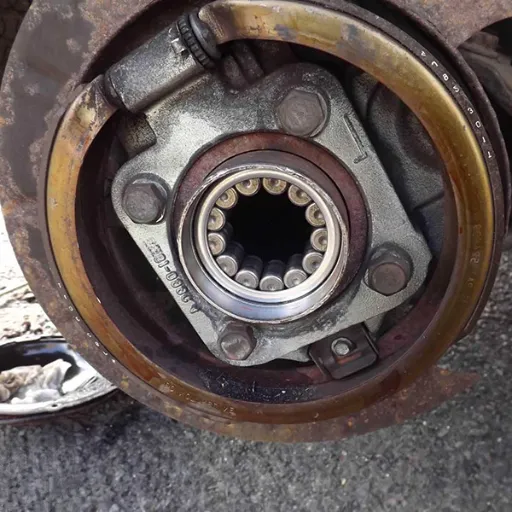
Old, worn bearings often exhibit various symptoms, including unusual wheel noises such as grinding and humming. Vibration in the steering wheel may appear; uneven tire wear or a loss of handling and stability in the vehicle may also occur. When these signs arise, have your vehicle looked after at once to keep the damage at bay.
Symptoms of Worn-Out Wheel Bearings
- 🔊 Unusual Noises: Grinding, humming, or growling sounds at the wheels, especially when turning or changing speed.
- 🎯 Steering Wheel Vibrates: A lot of shaking felt through the wheel, usually increasing with speed.
- 🛞 Uneven Tire Wear: Tire wear occurring at an accelerated or uneven rate due to poor alignment caused by problems with the bearing assembly.
- 🚗 Poor Handling: Less stability, difficulty steering, or a pulling sensation during driving.
- ⚙️ Too Much Play in the Wheel: Wiggling looseness if moving or jiggling the wheel, experienced during vehicle inspection.
⚠️ Critical Safety Warning: If any of these symptoms occur, getting the car checked promptly is vital. It will ensure safety and prevent any additional damage.
How to Diagnose Wheel Bearing Issues
When diagnosing wheel bearings that may be going bad, one must observe and perform simple tests. The steps that can be followed to identify a potential problem are:
- Unusual Noise: Wheel bearing failure produces noise almost immediately. Listen for humming, growling, or whirring sounds from the wheels as the vehicle moves, especially at higher speeds or during cornering. The noise will typically be louder on the affected side.
- Wheel Play Check: Using the jack, raise the vehicle and safely set it down on stands. Grab the wheel at roughly the 12 o’clock and 6 o’clock positions and try wiggling it around. Excessive play generally indicates a wheel bearing issue.
- Vibration: The feel of vibrations in the steering wheel or the vehicle at certain speeds can indicate a worn wheel bearing. This symptom is much more pronounced during acceleration or braking.
- Uneven Tire Wear: While looking for an irregular wear pattern on tires, most likely an aged bearing is poorly aligned with the accompanying symptoms of uneven wear.
- Manually Rotate the Wheel: Rotate the wheel while listening for grinding noises from within or for any resistance. In a good bearing, the wheel should rotate freely and quietly.
- ABS System Alerts: If a bearing is not operating correctly, sensor operations are hampered, and as a result, modern cars will display a warning sign on that wheel.
💡 Professional Advice: If any of these symptoms are observed, it becomes essential to consult an expert immediately. Such an intervention would have prevented the wheel bearing problems from causing further damage to some other parts of your vehicle and would also ensure safer driving.
Consequences of Ignoring Wheel Bearing Problems
Damaged wheel bearings can create hazardous residual heat and friction, leading to wheel seizure while driving and increasing the risk of potholes and accidents. When wheel bearings cannot be removed due to adverse conditions, excessive wear, or damage to adjacent community members, these issues might also become part of the problem down the road. This includes the hub, the axle, and even the transmission, all of which will require costly repairs. Left to deteriorate, this scenario can also cause the ABS to lose its effectiveness, reducing braking performance and increasing the risk of accidents in emergencies. This, in turn, can affect handling and comfort due to increased vibration and noise from the “flawed” wheel bearing, with uneven tire wear further aggravating the issue. It is imperative to address wheel bearing problems right away to ensure safety.
Wheel Bearing Replacement Process
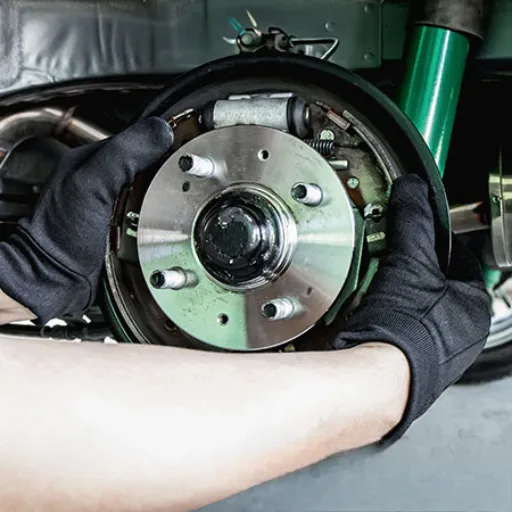
Step-by-Step Guide to Replacing Wheel Bearings
Step 1: Tools and Equipment Preparation
Gather the tools, including a jack, lug wrench, socket set, torque wrench, hammer, and bearing puller or press. Don’t forget to have new wheel bearings.
Step 2: Secure the Vehicle
Ensure the vehicle is positioned correctly for work by parking it on a flat surface. Engage the parking brake. Set the tire chocks on the sides of the wheels that will remain on the ground.
Step 3: Lift the Vehicle
Raise the side of the vehicle on which the bearing is to be replaced with the jack. Place the jack stands under the car as a precaution.
Step 4: Remove the Wheel
With the lug wrench, remove the lug nuts. Remove the wheel. Put the lug nuts in a secure place for reassembly.
Step 5: Remove the Brake Components
Remove the brake caliper and rotor. Use the socket or wrench to remove the caliper bolts. Hang the caliper with a wire in such a way that it does not hang by the brake line.
Step 6: Access the Wheel Hub Assembly
Loosen the bolts securing the wheel hub assembly, then remove them. Easily, an extra bolt or two will be encountered, depending on the vehicle, and it may require removing the CV axle nut as well.
Step 7: Remove the Old Wheel Bearings
Using a bearing puller, a press, or special tools, remove those old bearings. Make sure to work carefully so that other parts do not get damaged in the process.
Step 8: Inspect and Clean Components
Clean the wheel hub and surrounding areas. Look for any damage that might require further repair.
Step 9: Install the New Bearings
Press or install the new bearings into the hub with the appropriate tools, making sure they’re seated correctly and tightly.
Step 10: Reassemble Components
Now reinstall the wheel hub assembly, brake parts, and the wheel, in the reverse order of the disassembly steps. Torque all bolts properly to specifications.
Step 11: Test the Vehicle
After installation, lower the vehicle. Then proceed with a test drive to verify that everything runs smoothly and is free of strange noises.
⚠️ Important Safety Note: Replacing bearings is a mechanical procedure that requires precision; be careful during the process. Whenever you have even the slightest doubt, please ask an expert.
Tools and Materials Needed for Replacement
🔧 Essential Tools & Materials Checklist
Ensure all tools and materials are in good condition to ensure efficiency and safety during the process.
What to Expect During the Replacement Service
During wheel bearing replacement, the vehicle shall be placed on a jack and securely supported by jack stands for safety. The technician will remove the wheel and brake components, and, if desired, the hub assembly. The faulty wheel bearing will then be removed using special tools; the location will be cleaned, and the new bearing installed. After thorough lubrication, the components will be reassembled; the wheel and lug nuts can then be reinstalled and torqued to specification. A test drive can then be done to confirm that the repair was successful and that the wheel is turning correctly. The entire procedure is systematic and is aimed at restoring the vehicle to optimal working performance.
Reference Sources
- 📚 How Much Does a Wheel Bearing Replacement Cost?
This source provides an average cost range for wheel bearing replacement and discusses the factors that affect the price. - 📚 Wheel Bearing Replacement Prices & Cost Estimates
Offers national average costs and insights into how vehicle type impacts pricing. - 📚 Wheel Bearing: How Do I Know if I Need a Replacement?
Explains signs and symptoms of bad wheel bearings, which can help readers understand when replacement is necessary. - 📚$1400 for wheel bearings | $1600 for a tune up
A video discussing the high costs of auto repairs, including wheel bearing replacement.
Frequently Asked Questions (FAQs)
❓ Is there a typical price for replacing wheel bearings?
Depending on the vehicle make and model and local labor charges, the average cost of wheel bearing replacement varies considerably from one location to another. Generally, replacing wheel bearings costs between $300 and $800, including parts and labor. The price difference between replacing one wheel bearing and two will be an essential consideration.
❓ How much does it cost to replace a wheel bearing?
In general, replacing one wheel bearing will run you from $150 to $400, depending, of course, on the make of the vehicle and whether or not you go to the dealer or a local mechanic. If it is a hub-and-bearing unit, costs could go up somewhat since more new parts are involved.
❓ What are the signs that you need to replace a wheel bearing?
Symptoms that usually point to worn wheel bearings include wheel grinding, a wobbly wheel, or the ABS light coming on. Whenever these symptoms are noticed, it is ideal to have the vehicle checked as soon as possible to prevent further damage.
❓ Is wheel bearing replacement cheaper if done by oneself?
Replacing wheel bearings may benefit a DIYer by eliminating labor costs if they have the required tools. Yet they will also have to buy the bearing assemblies and any other related parts, whose prices vary. It is wise to understand the wheel bearing replacement process, as poorly performed replacements may cause additional problems.
❓ What are the causes for varying costs associated with wheel bearing replacement?
Wheel-bearing replacement costs depend on several factors, including the type of vehicle, the location of the repair shop, and whether you are working on sealed or standard bearings. Should your vehicle require any significant work, such as replacing suspension components or addressing a steering knuckle issue, this would also increase your price.
❓ Can I drive with a worn-out wheel bearing?
Although you can, it is a bad idea to drive with worn wheel bearings, as it can cause even more damage, potentially leading to failure of the wheel assembly and very costly repairs, as well as a hazardous situation on the road. If you suspect your wheel bearings are worn, it’s best to have them inspected and replaced as soon as possible.
Final Thoughts
Understanding wheel bearing replacement costs and recognizing the warning signs of worn bearings are essential for maintaining your vehicle’s safety and performance. By staying proactive with regular inspections and addressing issues promptly, you can avoid costly repairs and ensure a smooth, safe driving experience. Always consult with qualified professionals for accurate diagnostics and quality repairs tailored to your specific vehicle needs.







